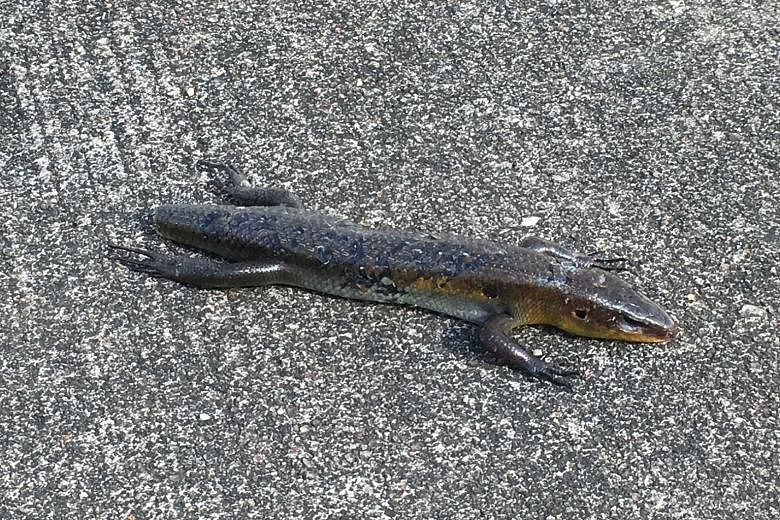ST reader Clarence Ching e-mailed askST with photographs of an animal he spotted in Sembawang Park and asked for an identification. Environment reporter Audrey Tan checked with an expert and found the answer.
This is a many-lined sun skink, or the Eutropis multifasciata, in the process of regrowing a tail.
The reptile could have lost its tail to a predator, said Mr Sankar Ananthanarayanan, the co-founder of nature group Herpetological Society of Singapore (HerpSoc).
Unfortunately, he added, judging from the photographs, the animal also looks dead.
"Within vertebrates, the ability to lose the tail and regrow it is quite special. But it is important not to disturb lizards too much. When they shed their tails, they actually lose energy reserves that can be quite valuable," said Mr Sankar.
Food is not always readily available for wild animals. Therefore, energy is valuable to them, he added.
Herpetology is the study of reptiles and amphibians.
 The many-lined sun skink could have lost its tail to a predator, says Mr Sankar, the co-founder of nature group Herpetological Society of Singapore. PHOTO: CLARENCE CHING
The many-lined sun skink could have lost its tail to a predator, says Mr Sankar, the co-founder of nature group Herpetological Society of Singapore. PHOTO: CLARENCE CHING
Mr Sankar said his interest in these animals, less charismatic than iconic creatures such as lions or tigers, started as he felt that they are misunderstood animals, often thought of as being scary.
"I felt that I wanted to understand them more on a personal level. Many of my friends were also interested in this, so we sort of learnt together and from one another too.
"I think generally herps are misunderstood in the way that many people may think reptiles and amphibians are motivated to hurt them. This isn't the case. In general, wild animals only want to be left alone," he told askST.
"The HerpSoc wants to spread this love and to get rid of misunderstandings and misconceptions as far as possible."
One way the society is doing this is through free guided "herp walks" to places such as the Central Catchment Nature Reserve to point out their importance to natural ecosystems.
For more information, visit the Herpetological Society of Singapore's Facebook page at www.facebook.com/herpsocsg/



